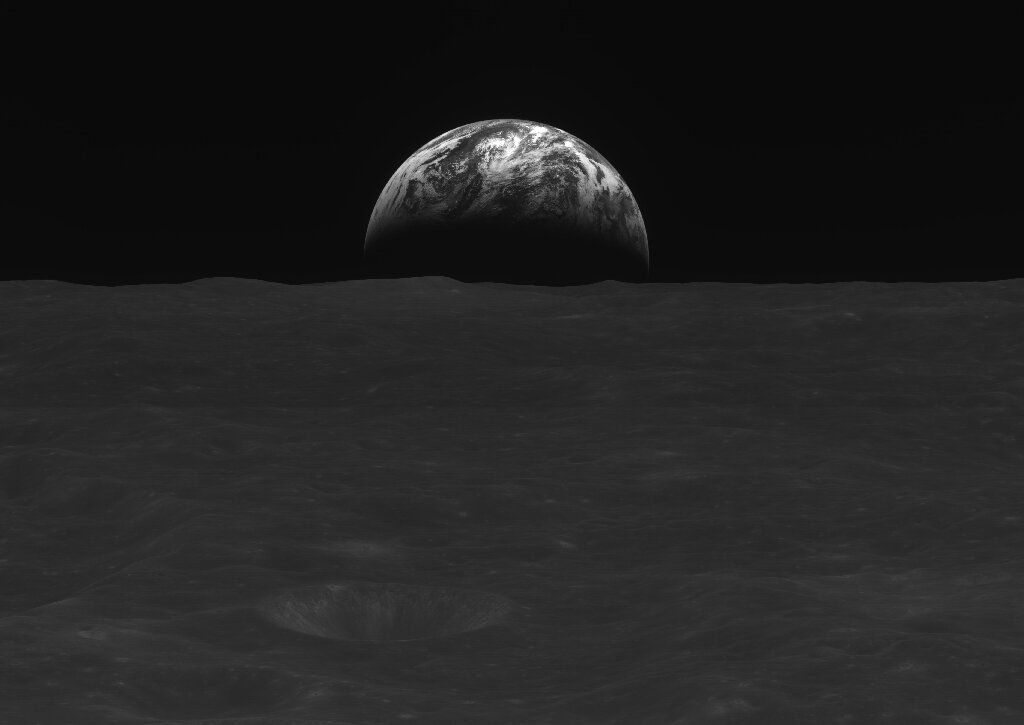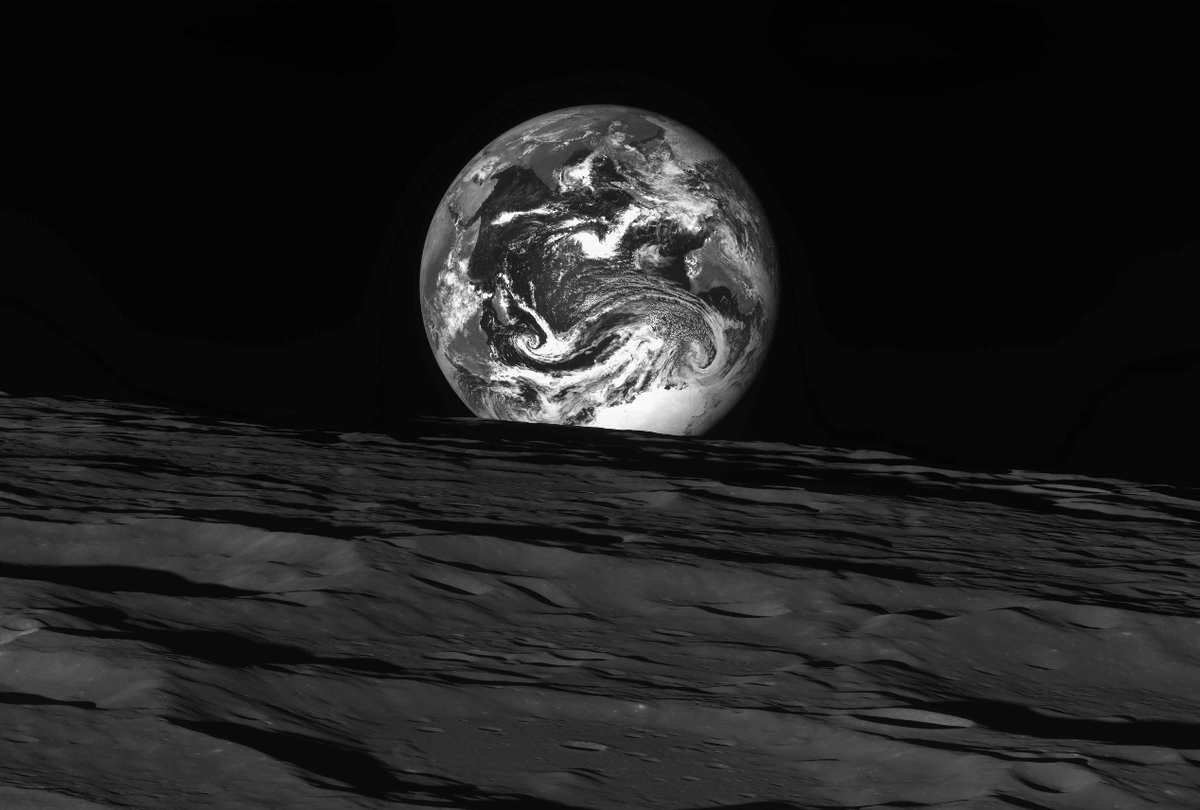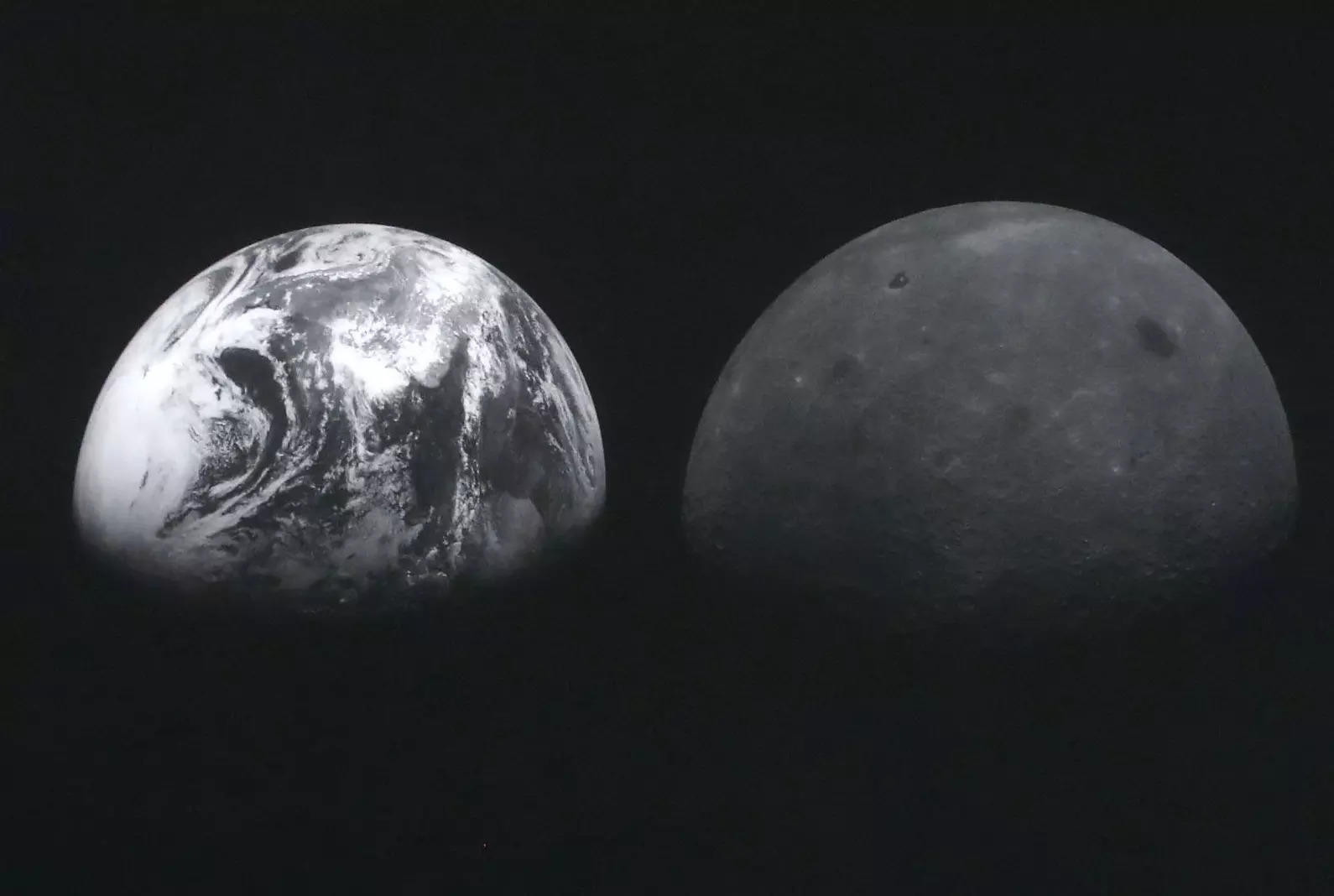The Korea Aerospace Research Institute (KARI) both ended 2022 and started 2023 on a very high note as its first-ever lunar orbiter, Danuri, sent back black-and-white images of the Earth with the Moon’s surface in the foreground that were photographed between December 24 and January 1, KARI announced in a January 3rd statement. Both the images and videos were taken less than 120 kilometers (75 miles) above the Moon’s surface, and will be “used to select potential sites for a Moon landing in 2032,” KARI added in the statement.

As stated, Danuri, also known as the Korea Pathfinder Lunar Orbiter (KPLO), is South Korea’s first-ever lunar orbiter, and was launched on August 4, 2022, onboard a SpaceX Falcon 9 from Cape Canaveral, Florida, and successfully achieved lunar orbit in December 2022. Danuri is slated to begin its scientific mission in February 2023, which has several objectives: analyzing and mapping the lunar surface; measuring gamma rays and magnetic strength; and testing an experimental “space internet” technology by sending images and videos back to Earth, which this most recent image and video cache demonstrated; and identifying potential future landing sites, as noted above.

South Korea’s President Yoon Suk-yeol lauded Danuri’s recent milestones as a “historical moment” in South Korea’s space program.
While Danuri weighs in at 550 kilograms (1212 pounds), the scientific payloads only encompass about 40 kilograms (88 pounds), and consist of several instruments, which include the Lunar Terrain Imager (LUTI), Wide-Angle Polarimetric Camera (PolCam), Magnetometer (KMAG), Gamma-Ray Spectrometer (KGRS), and a NASA-developed high-sensitivity camera (ShadowCam).

ShadowCam is an especially prudent instrument since it will be searching for ice deposits within the Moon’s permanently shadowed regions (PSRs) at the Moon’s poles, and will be beneficial for future exploration, specifically NASA’s Artemis missions which will land astronauts at the lunar south pole later this decade.
KARI has outlined ambitious objectives for outer space, which they refer to as Future Vision 2050, with the goals of landing a spacecraft on the lunar surface by 2032 and Mars by 2045.
Source: www.universetoday.com





